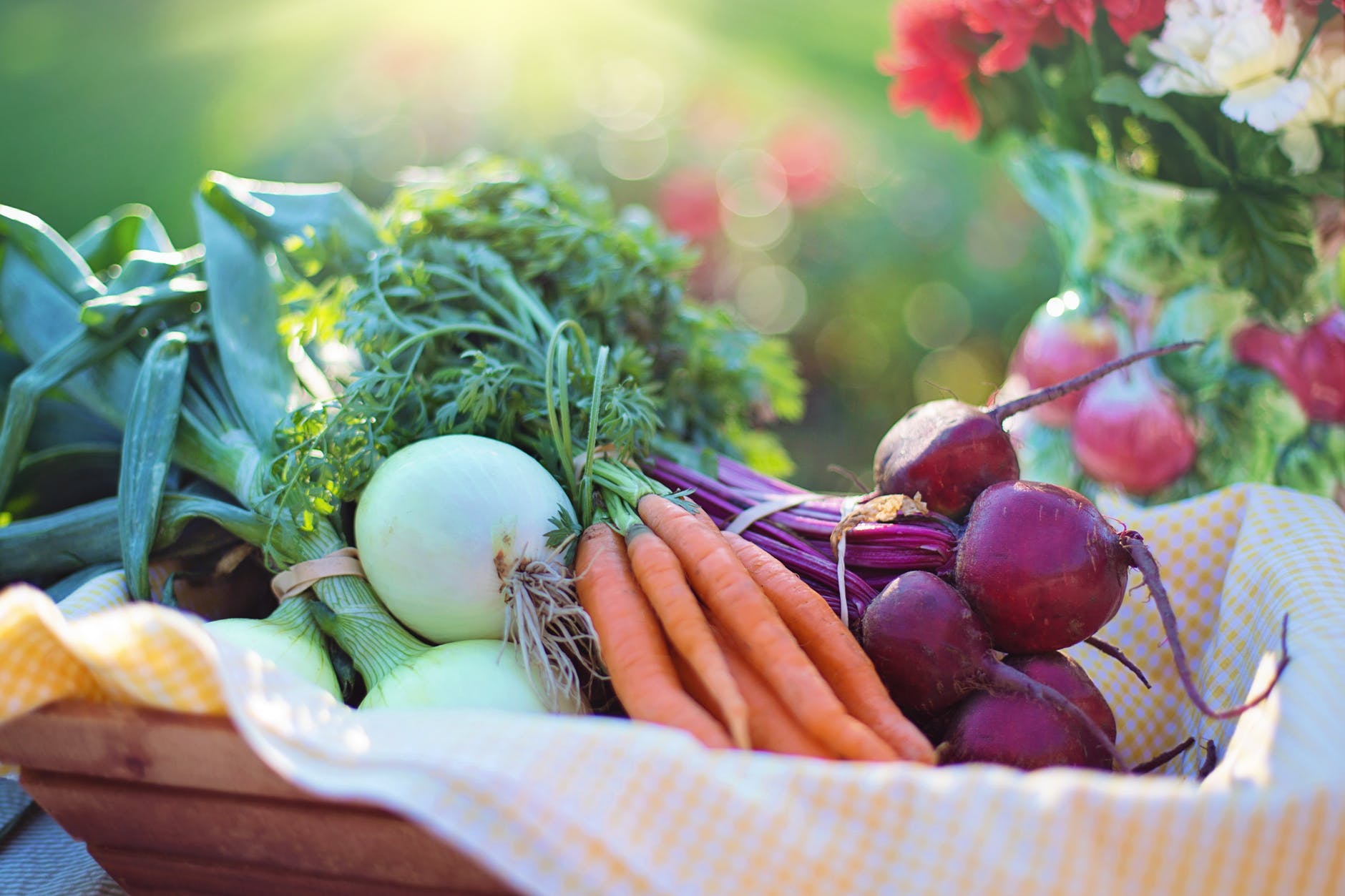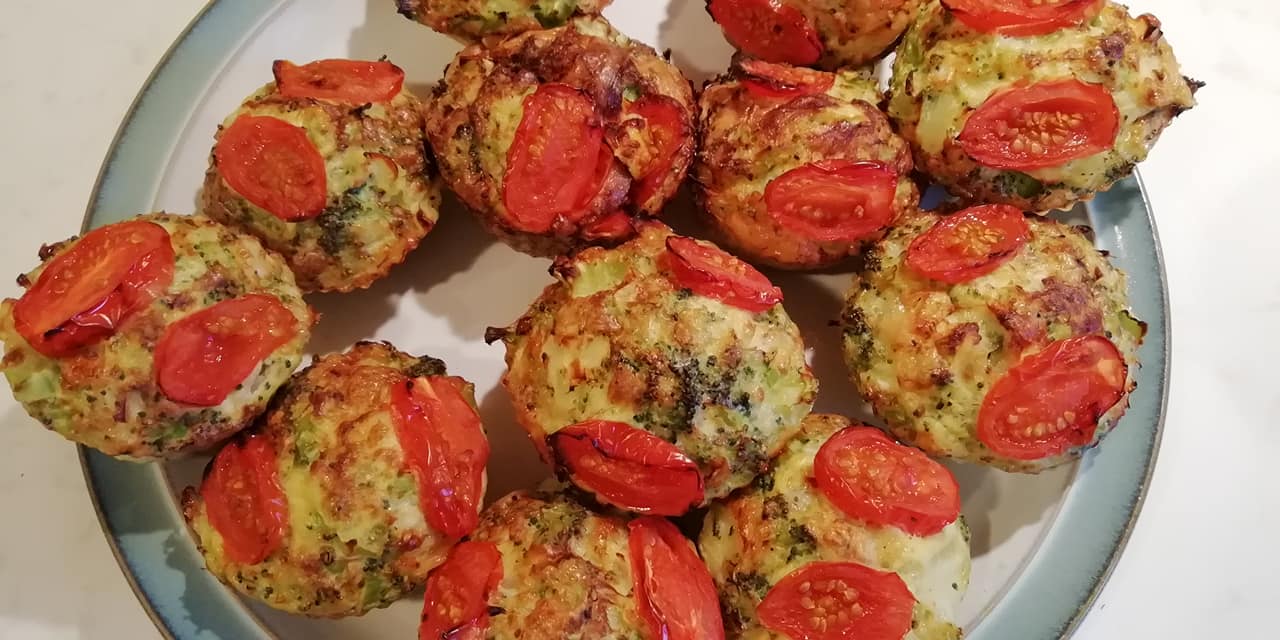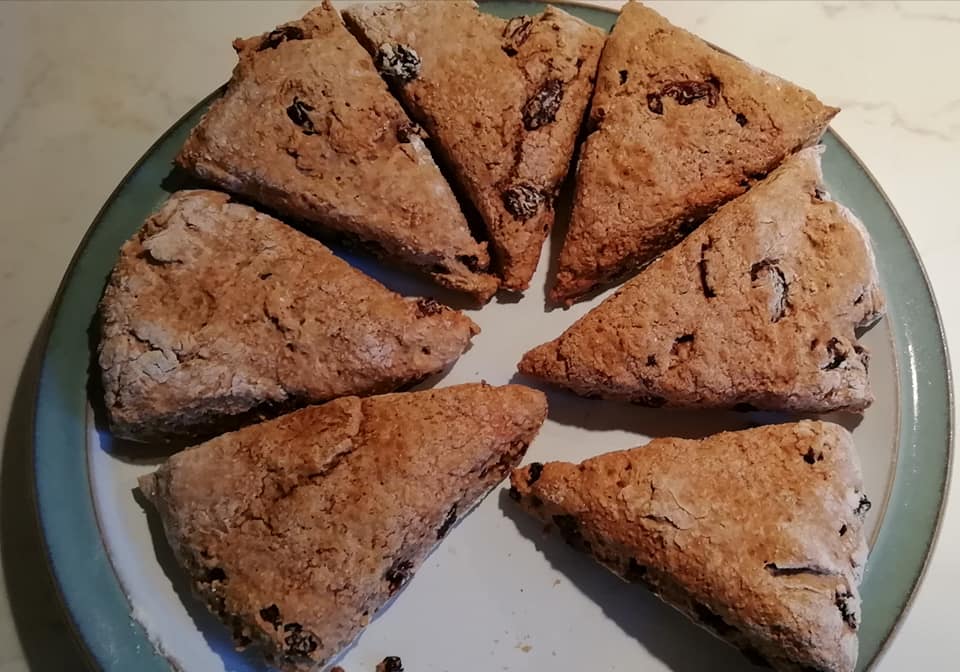Road Map to Intuitive Eating
- By Madeleine Craig
- •
- 08 May, 2019
- •
Intuitive eating isn’t dieting, it’s the ability to listen
to your body and respond by giving it what it needs. While intuitively eating sounds
easy; eat what your body needs, without the need to count calories, points or Syns,
it requires some practice, and a road map to find your way out of the diet
maze. It may take a while to get out of the maze completely, but every step you
take, no matter how small it might seem, is taking you in the right direction.
This road map is a guide, and not a strict set of rules that have to be followed in a particular order; some people may take a direct journey, but others may prefer a more scenic route. Neither is wrong, and will depend, in part, on where they are starting from.
Stage 1
Think about your goals; why are they your goals, and what you are willing to do to achieve them?
You might think your goal is to lose weight, but when you really take the time to think about it, you might realise that, while weight loss is a part of it, you really want to make improvements to your health so that you can have the energy to run around after your children or grandchildren, and to stay healthy and mobile as you get older. You might then realise that you are not willing to give up your favourite chocolate, or nights out with friends, but you want to learn how to incorporate them into your new, healthy lifestyle. This will also make you realise that there isn’t an end date, instead it is a life-long journey.
Stage 2 – learning about your relationship with food.
· Why do you eat, is it just for hunger, or are you an emotional eater?
· Are you aware of when you're hungry and when you're full?
· Do you start a new diet every Monday, starving yourself for a few days followed by a weekend binge?
· Do you eat in secret?
· How quickly do you eat?
· Who do you eat with?
What do you currently eat, and how much?
· How often do you cook?
· How often do you get a takeaway?
· Do you often skip meals?
· How many portions of fruit and vegetables do you eat a day?
· How much alcohol do you drink a week?
Keep a food and feelings journal for a week, and a hunger/satiety diary. This will give you lots of insight into all of the above.
Stage 3
Focus on slowing down and being aware of what you eat. Sit down to eat, with no distractions. Take small mouthfuls, chew thoroughly and put your fork down between each bite.
Stop eating when you are 80% full. Eating slowly really helps here because it takes about 20 minutes for your brain to register that you've eaten enough.
Drink more water.
Stage 4
Make sure you're getting enough sleep. If you're regularly sleep deprived this should really be stage 2 because your body will be demanding high energy foods just to get through the day. Get into a good night time routine, turn off all screens at least an hour before going to bed, cut back on caffeine in the afternoon and evening, spend some time relaxing before bed etc.
Stage 5
Eat more vegetables and lean proteins. Aim for at least 5 portions of vegetables a day, with lots of different colours. Also get 2-3 portions of lean protein. By doing this you will be filling your diet with nutrient dense foods, which will also keep you feeling satisfied for longer.
Stage 6
Plan your week ahead. Find time to plan and shop for your meals, as well as deciding when you will exercise. Make sure to plan time to relax and recharge as well.
Stage 7
Start building your meals using your hand as a guide to portion sizes:
· 1-2 palm sized portions of lean protein
· 1-2 cupped handfuls of starchy carbohydrates
· 2 fist sized portions of vegetables
· 1-2 thumb sized portions of healthy fats
This is your starting point; you also need to be guided by your appetite.
Stage 8
Get more active. This can really be started alongside any of the previous stages, and needs to only begin with just moving more than you currently are. Even an extra 10 minutes walking a day will be beneficial; you can then build up from there.
Stage 9
Take a look at how far you’ve come. Are there some stages that have been easier than others? Go back and revisit each stage and see how you can take things a bit further. The aim is for all of these stages to become natural habits, rather than challenges, but there is no time limit. Just keep on moving forwards at your own pace.
Having a few quick, inexpensive recipes that can be made from things you can keep a stock of means that you can always whip up a healthy meal, even when time, or money, is short. This recipe for cream of tomato soup takes less than 10 minutes to prepare, and about 30 minutes to cook. It can also be cooked in a slow cooker, which saves even more time and money.
Ingredients:
1 onion, diced
2 tablespoons tomato puree
1 tablespoon oil
1/2 cup red lentils, rinsed
2 or 3 tins tomatoes
1/2 cup water
1 tin coconut milk (full or reduced fat) (Aldi and B&M are the cheapest place to buy this)
2 stock cubes
Dried herbs
1/2 - 1 teaspoon smoked paprika
1/2 teaspoon chilli flakes (optional)
Teaspoon sugar, if needed.
Method:
Heat the oil and gently fry the onion until soft
Add tomato puree and fry for a further 2 minutes
Add in all other ingredients and bring to the boil.
Reduce heat, cover and simmer for 30-40 minutes, or until lentils are soft.
Blend until smooth.
Alternatively, put all ingredients into a slow cooker and cook:
Low - 6-8 hours
High -3-4 hours.
Adjust seasoning to taste.
You can add in other vegetables, such as red peppers and carrots, to get in more nutrients.
Depending on where you shop, this would make 6 generous portions for around £2.00


This can be used as a pasta sauce or used as a base for chilli,
Bolognese or curries. It can be used as dip in place of ketchup or, if you chuck
in a can of coconut milk, it makes a pretty good cream of tomato soup. If you
want to add a bit more protein and fibre, add some red lentils to the recipe.
You can use any vegetables that you think you’ll get away with, so experiment.
This was my latest version:
Ingredients
- 1 jar of passata with onion and garlic
- 2 tins plum tomatoes
- 2 tablespoons tomato puree
- 2 carrots
- 1 red pepper finely chopped
- 1 large onion finely chopped
- A few large handfuls of frozen cauliflower.
- About 8 large, closed cup mushrooms finely chopped
- 1 tablespoon rapeseed oil
- 2 vegetable stock cubes
- 1 teaspoon chilli flakes
- 1 tablespoon dried mixed herbs
Method
- Heat the oil in a large saucepan
- Add the onion and fry gently until soft
- Add the tomato puree and fry for a couple of minutes
- Add carrots and fry for a couple of minutes
- Add all of the other ingredients
- Bring to the boil
- Reduce heat, cover and simmer until all the vegetable are soft.
- Blend to the desired consistency.
This made a large pot. Some was mixed with cooked pasta and used for lunches for the children. Today I have added another tin of tomatoes, a bag of Quorn mince, some green lentils and another stock cube and is currently simmering to make Bolognese. When it’s cooked, I will take half of it and add kidney beans and some more chilli flakes. This will be tonight’s dinner, and will be served with tortilla wrap bowls (put a tortilla wrap into a suitable size oven prove bowl and heat in the oven for a few minutes until it’s slightly crispy, it will then stay in the shape of the bowl and you can fill it with whatever you choose.

Egg muffins (makes 12)
Ingredients
- 1 small onion
- 1 head of broccoli
- Cherry tomatoes
- 6 eggs
- ½ teaspoon bicarbonate of soda
- Salt
- Pepper
- 1 teaspoon of chilli flakes (optional)
- 50g cheddar cheese
Method
- Preheat oven to 200c, gas mark 6
- Cut up the onion and broccoli very finely and put in a mixing bowl
- Break the eggs into another bowl, or jug and whisk
- Add salt, pepper and chilli flakes to the eggs
- Add the eggs to the vegetable and mix well
- Add in the cheese and mix again
- Spoon the mixture into muffin cases (I use silicone ones because they don’t stick)
- Slice the tomatoes and put a couple of slices onto of each muffin
- Put in the oven and bake for around 20 minutes, or until the eggs are fully cooked.
They can either be eaten straight away, or will store in the fridge for about 2 days. They also freeze well, so can be made in batches.

Ingredients
- 1 ¼ cups plain flour
- 1 ¼ cup oats (finely ground)
- 1 tablespoon cinnamon
- 1 ½ teaspoon bicarbonate of soda
- 1 ½ teaspoon salt
- ¾ cup soya milk
- 3 tablespoons maple syrup
- ¾ cup raisins
- Soft brown sugar (optional)
Method
- Preheat oven to 200C, gas mark 6
- In a bowl, mix together the oats, flour bicarbonate of soda, salt and cinnamon.
- In a separate bowl mix together the soya milk, maple syrup and raisins.
- Add the wet ingredients to the dry and mix well until it forms a dough.
- Transfer to a floured surface and form into a round shape, about 8 inches across.
- Cut into 8 wedges (more if you would prefer smaller scones)
- Sprinkle a small amount of sugar on the top of each wedge (if using)
- Transfer to a baking sheet.
- Bake for about 20 minutes.
When it comes to weight loss, it is common to think that you have not been successful because of something you’re lacking in e.g. will-power or motivation, but the truth is more likely to be that you have either tried to change too many things at once, or you are starting a diet from a high stress or sleep deprived state. Yes, the laws of physics do always apply to fat loss – you need to eat fewer calories than you use – but there are many other factors that come into play as well, and many come down to different forms of stress.
Are you sleep deprived? This is a huge stress on the body. When you’re exhausted because you’re not sleeping your body will demand foods that provide instant energy, which are all of the foods that you have probably banned from your diet, adding in further stress.
Are you currently very sedentary? Again, this is hugely stressful for your body. We are designed to move, not to spend our days sitting down, whether that’s for work or leisure. Being sedentary will make it more difficult to sleep well because, even though you may feel exhausted, your body isn’t tired. When you’re not sleeping you will crave high energy foods, and this creates a vicious cycle.
Is your diet full of processed foods, sugar and unhealthy fats? If it is, you may well be eating more calories than you need while not getting the vitamins and minerals that your body needs to function. The result is that you will crave even more food because your body is trying to get what it needs, you won’t have the energy to move, making you even more sedentary, you won’t sleep well and your body will be under even more stress!
Do you have a stressful job? problems in your relationship? too much to do and not enough time or loved ones to care for? Again, you’re stressed, but now you don’t have any time to devote to looking after yourself, so guess what? You crave high energy foods to get you through the day, you don’t sleep because you’ve got too much on your mind and you are constantly busy without being able to be active.
Trying to diet from such a stressed state only adds more stress onto your body, which will respond in the only way it can, by craving more high energy foods. So, instead of thinking that you need to diet to lose weight, start by looking at the other areas of your life and making changes there first:
Devote time to creating a good night time routine so that you start to sleep better.
Get moving. This doesn’t need to mean hours at the gym, making time to get out in the fresh air for a walk will do wonders for your body and your mind, and will make it much easier to sleep.
Forget about removing the less healthy foods from your diet for now, instead, start adding in some more fruit and vegetables to your day, and some lean protein and wholegrain carbohydrates to your meals.
Set aside some time just for you. This might be just 10 minutes where you can be still, or a night out with friends. Going out for a walk, without distraction, or while listening to favourite music or podcasts is not only a great stress reliever, but burns calories and will help improve your sleep. A relaxing bath before bed will also help you to wind down and sleep.
By taking steps to reduce the stress on your body you will find that your cravings for high energy foods will naturally reduce, from there you can move on to looking at your diet in more detail. Of course, this isn’t the route to a quick fix, but it is the foundation of sustained fat loss and good health.
Have you ever thought that you should go on a diet to lose weight, but now isn’t a good time? Perhaps you’ve got a lot of stress in your life at the moment, or you’ve got a few big nights out planned so there’s no point?
But, in reality, there is never going to be a good time if your idea of losing weight involves depriving yourself of all the things you love, or having to miss out on special events with those close to you. There will always be something that will get in your way, or derail your efforts, so trying to stick to any kind of rigid eating plan will always be a struggle.
However, if, instead of starting a diet, you chose to make small, easy changes, that you will be able to stick to no matter what life throws at you, it now becomes a far less daunting idea. Start with where you are now, and make one small change to one meal, and stick with that one change until it becomes easy for you, and then move on to the next small change. E.g. if your day looks a bit like this:
Breakfast - A packet of crisp and a can of diet Coke, eaten on the run because you’re late for work
Lunch - A shop bought sandwich and a couple of biscuits, eaten at your desk while you work
Dinner - Either a take away or a ready meal, washed down with a few drinks while you watch TV, because you’re too exhausted to even think about cooking.
Asking you to start planning all of your meals, and cooking them from scratch, eat 7 portions of vegetables a day and get up an hour earlier so that you can walk to work is never going to work. Instead, perhaps you could swap the crisps at breakfast for a banana and a pot of yogurt. You might still have the coke, but that’s OK, But your next step might be to swap it for a cup of tea. After that, you might decide to try preparing overnight oats using some berries and a few pumpkin seeds, and eat it slowly, either at home in peace or, if it’s too early for you, get to work 10 minutes early so you can enjoy it before your hectic day starts.
Once you’ve nailed your new breakfast routine, you can then move on to your next meal. Lunch might still be a sandwich from the shop, but you could swap the biscuits for some fruit, or just add in some extra vegetables from a bag of salad leaves. You then might start making your sandwich at home to bring to work, or eat your lunch away from your desk so you get a break. If you can get outside for a walk at lunchtime, so much the better. Moving on, you could swap your sandwich for some homemade soup or a salad with chicken and potatoes.
Once lunch becomes easier, you would move on to making changes to your evening meal. Adding some vegetables to your ready meal, or sitting at the table to eat. You might then decide to pick one evening where you cook from scratch. If you cook double you can put it in the freezer for another night. Moving on, you can start cooking three times a week, making sure that you’re adding in extra vegetables. You might start having one or two alcohol-free days each week, then perhaps build on that until you’re having four days a week without alcohol.
Of course, your current diet might already be pretty healthy, but you’re still struggling with your weight. If that is the case, then you would start looking at your portion sizes, or places where you’re eating things without really realising. The point is to start with where you are currently are, and begin making small improvements, until you are where you want to be, rather than trying to change everything at once.
- Get up 10 minutes earlier and spend that time jogging on the spot, doing star jumps, dancing around the kitchen, or marching on the spot. You can probably get in about 1000 steps in that 10 minutes.
- When you’re watching TV, get up during the adverts and jump around anyway you like, or be hardcore and only sit down during the adverts.
- Always take the stairs.
- Park the car further away and walk to wherever you need to be.
- Walk while you’re on the phone.
- Get out for a walk at lunch time.
- Go for a 10 minute walk when you finish work, rather than getting straight into the car to head home.
- I’m being good / I’ve been bad
- I’m on track / I’ve fallen off the wagon
- I’m on plan / I’m off plan
- I can’t eat that, I’m being good
- I shouldn’t have eaten that; I’m supposed to be being good
- I’ve already been so bad; I might as well give up and start again on Monday
